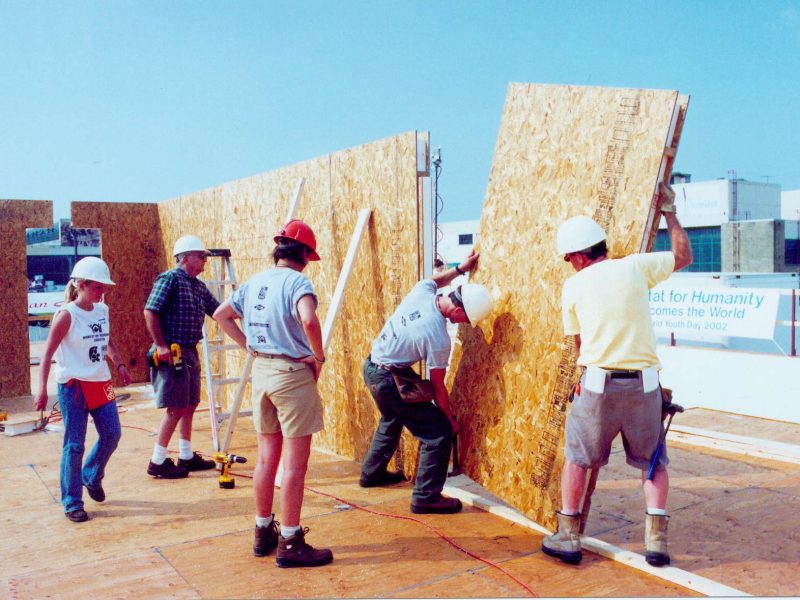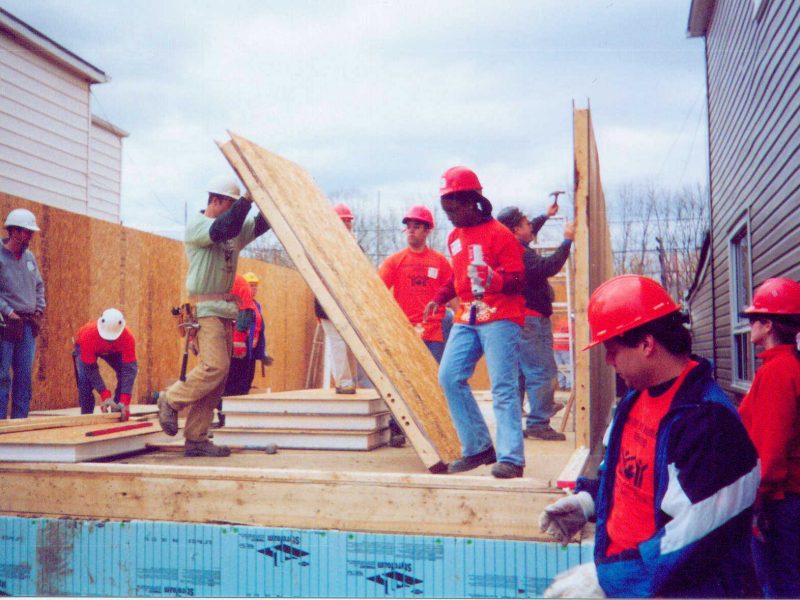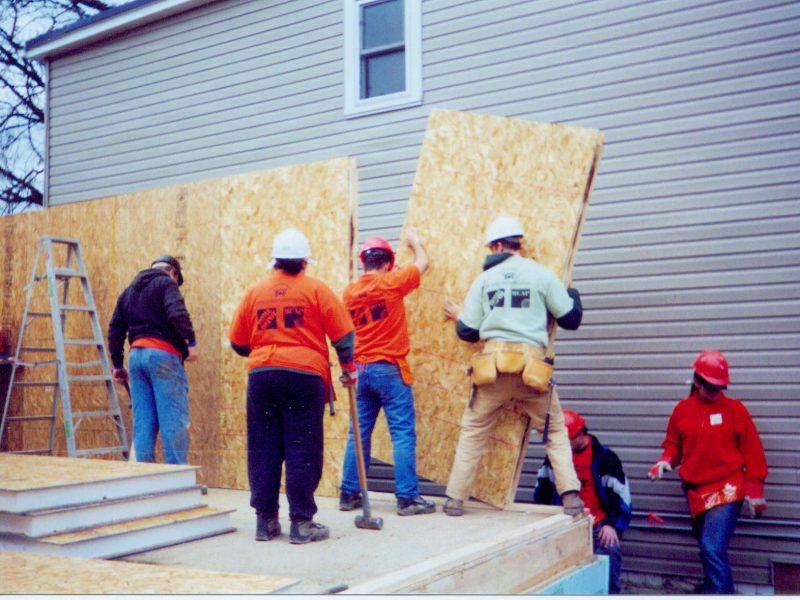Project Overview
| Date | 1999 - Today |
Solutions for Habitat for Humanity
Habitat for Humanity stands out as one of the most successful non-profit organizations in recent memory. Founded in Georgia in 1976, Habitat has mushroomed across 83 countries and has built an outstanding number of homes for low-income families around the world.
With the help of volunteer labour, Habitat for Humanity builds and rehabilitates modest, functional homes. The houses are sold to qualifying partner families at no profit and financed through affordable mortgages. Mortgage payments are then pooled into a revolving fund, which is used to build additional homes. It’s an innovative, grassroots model that has brought the pride of home ownership to thousands.
Habitat takes a keen interest in the long-term financial and healthy well-being of homeowner families. Consequently, energy efficiency and establishing a safe and healthy living environment is a priority for the organization. At the same time, Habitat must consider speed and ease of construction when choosing between building methods and materials: Speed because houses typically go up in a matter of days, and ease of construction because much of the volunteer labour force is inexperienced in building trades.
It’s not surprising that Structural Insulated Panels (SIPs) are the preferred wall system for many Habitat for Humanity affiliates.
Thermapan Structural Insulated Panels has been involved for years with Habitat for Humanity affiliates from Winnipeg to New York City. The company supplies several local chapters with SIPs, at cost or on a donated basis. To date, an estimated 40 Habitat homes have been built using theThermapan Wall SIP system.
“We first began working with SIPs in 1999,” explains the Executive Director Neil Hetherington for Toronto Habitat for Humanity: “We’ve had nothing but positive feedback from our volunteers and homeowners, and as a result, we now build exclusively with SIPs.
Volunteer-Approved
Habitat volunteers favour Thermapan SIPs because of the ease and speed of construction. Given the ambitious pace involved in a typical build, the quicker that walls can go up, the sooner other exterior and interior tasks can begin. Conventional “stick-and-batt” framing, using studs and fiberglass insulation, is much more labour intensive and time-consuming in comparison. The installation of SIPs on a typical Habitat bungalow can be completed in as little as four hours thanks to the help of about a dozen volunteers.
Habitat volunteers typically have very little building experience, learning on the job from other volunteers who were themselves trained on a previous project. From build to build, SIPs have proven that they have a much quicker learning curve than many other construction skills. Thermapan’s leading-edge manufacturing and quality assurance systems ensure consistency from panel to panel, simplifying the construction process and promoting better-built homes.
Family Well-Being
The merits of structural insulated panels during construction are more than enough to explain why many Habitat affiliates rely on Thermapan’s Wall SIP systems. But the post-construction benefits are equally impressive.
“Habitat homeowners benefit tremendously from SIP-built houses,” says Jim Killoran of the Habitat for Humanity of Westchester. The affiliate, near New York City, has put up nearly a dozen homes with Thermapan SIPs, and now builds exclusively with the system. “Our main activity may be building affordable housing, but we care deeply about the well-being of all our participant families in the long-run.”
Energy efficiency is one of the most significant “quality-of-living” benefits. Thermapan’s system can reduce energy costs by 30 to 35 percent, a significant savings for families with tight budgets. Reduced heating costs make it easier for families to keep up with mortgage payments. In addition, the solid nature of a Wall SIP system eliminates air circulation and moisture, preventing the growth of mould, mildew, wood decay and allergens – key factors proven to contribute to “Sick House Syndrome” in traditionally framed buildings.
Building with SIPs is a win-win situation for everybody involved with Habitat. “We are very proud of our partnership with Habitat for Humanity,” says Emil Taraba, President of Thermapan Structural Insulated Panels. “Indeed, we look forward to many more years of working together, and most importantly, to many more successful builds.”



